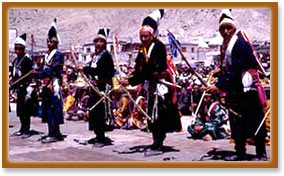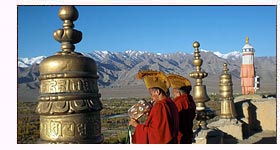Ladakhi society in slight depth
As a Ladakhi I always wonder how we are different from the rest of the world ethically and morally.I mean i am so grateful to exist in a society which consist not only of our family but also our environment, our neighbours, friends and relative ,flora and fauna, nature in more sort of prominent way.Ladakhi community is very much dissolved in its own, its culture is unique and harmonious ,though its tradition shares with that of tibet ,but as an observer point of view there is huge variation in culture and tradition between the tibetans and the one exist in ladakh.Even the language is technically different but one can understand tibetan or ladakhi vice a versa.As the script were written in tibetan(Bothi).Monasteries,stupas and various heritage sites such as monasteries were mainly influenced from Tibet and art and painting from Kashmir.






Ladakh has a very vast and rich culture in the world.People of Ladakh has always been known for its warmth heart and compassion towards each other.Ladakh is also known for 'land of beautiful faces'.traditionally every Ladakhi village or a community has its own form of local government lead by the Goba of the village elected either by voting or by volunteering which happens in most cases.
Goba-
The elected Goba is the supreme of person of the village and has been treat with huge respect.He has a great role to play in community like in ladakh.He is the one who look after all issues related to his region.He has to resolve the hurdles and problems among the community peacefully.
Goba has to attend many function such as weddings,archery festival or various other festivals for which he is always invited as an important guest.He has the right to conduct nay sort of meetings and discussion including various intellectual person of the village.So basically its the goba who deal with the development of once village.



Goba-
The elected Goba is the supreme of person of the village and has been treat with huge respect.He has a great role to play in community like in ladakh.He is the one who look after all issues related to his region.He has to resolve the hurdles and problems among the community peacefully.
Goba has to attend many function such as weddings,archery festival or various other festivals for which he is always invited as an important guest.He has the right to conduct nay sort of meetings and discussion including various intellectual person of the village.So basically its the goba who deal with the development of once village.





 The original silk route.
The original silk route.


